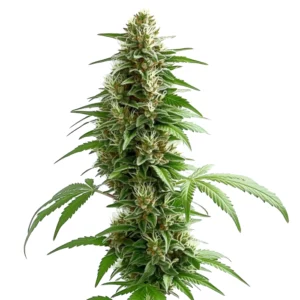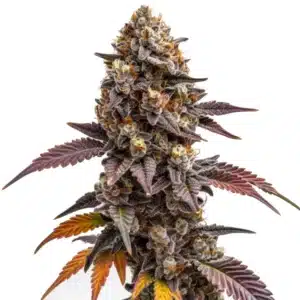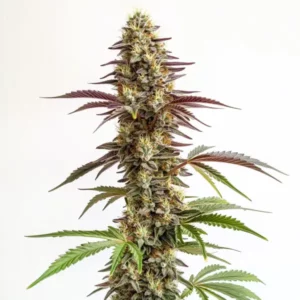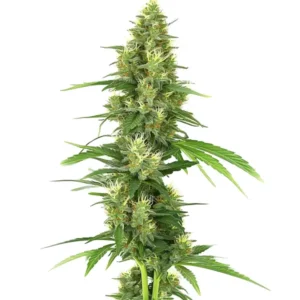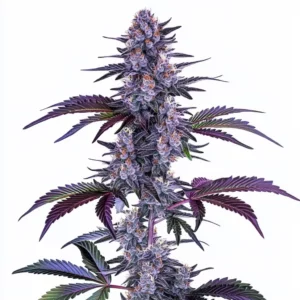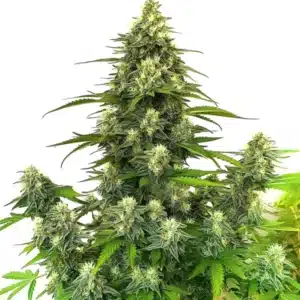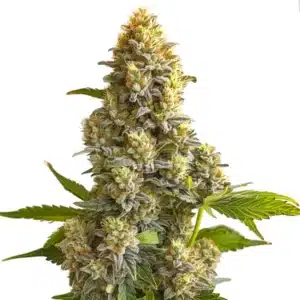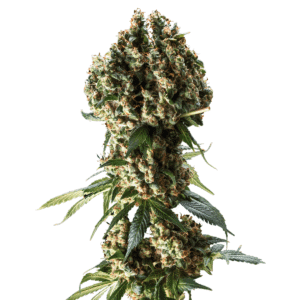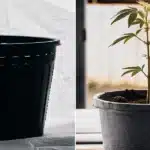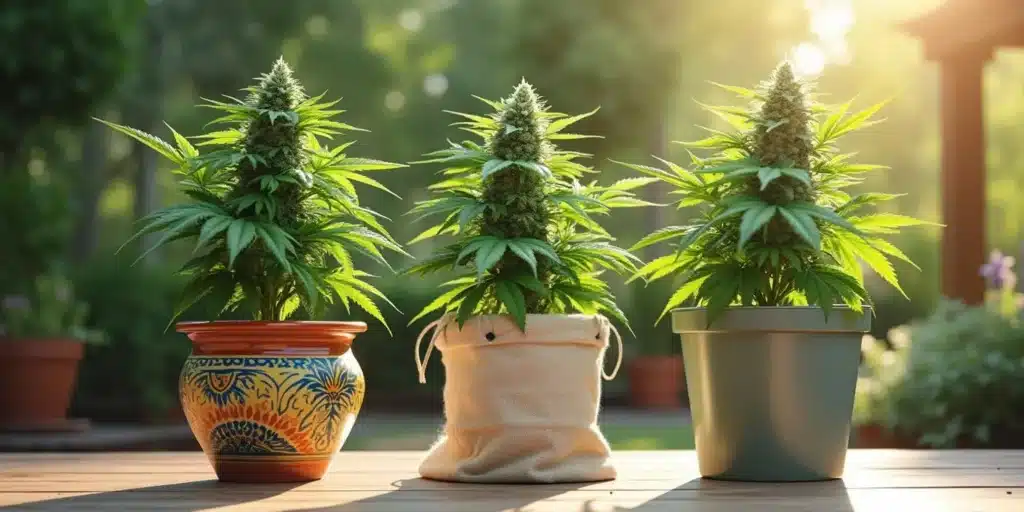
Growing Cannabis Plants in Pots Outdoors
Growing cannabis outdoors can be an enriching endeavor. Using pots provides the freedom to position your plants wherever the conditions suit them best. Whether you’re just starting out or have years of experience, knowing a few essential aspects will guide you in nurturing healthy plants.
In this guide, we’ll explore various critical factors that contribute to successful outdoor cultivation. By following these tips and tricks, you’ll be on your way to cultivating a lush cannabis garden that can thrive in the great outdoors.
Recommended Strains
Green Crack
|
|
THC | 21% (Medium) |
|
|
Type | Feminized |
|
|
Yield | High |
|
|
Phenotype | 35% Indica / 65% Sativa |
Green Crack Auto
|
|
THC | 18% - 20% (Medium) |
|
|
Type | Autoflowering |
|
|
Yield | High |
|
|
Phenotype | 50% Indica / 50% Sativa |
Choosing the Right Pots
The first step in your outdoor cannabis journey is selecting the right pots. Size plays a crucial role in this decision. For young plants, smaller pots are fine as a starting point, but your plants will require larger pots as they grow and spread their roots. You can grow in both large and small pots, but the size of the plant will depend on how much root space it has. The more the roots can grow downward, the more the plant can grow upward. So, the bigger the pot, the better. The more soil the plant has access to, the more it will grow.
Consider these perspectives when choosing pots:
- Size: Opt for pots that are at least 5 gallons for outdoor growth. This sizing allows ample space for roots to expand and absorb nutrients effectively. Ideally, aim for 50L pots or larger to simplify care and support optimal growth.
- Material: With various options like plastic, fabric, and clay, each material presents its unique pros and cons. For instance, fabric pots allow for better air circulation for the roots, while plastic pots are lightweight and cost-effective. However, plastic pots especially dark ones don’t insulate well and can overheat in the sun, burning roots. White pots are better as they reflect light and stay cooler. Even better, clay or ceramic pots provide excellent temperature insulation.
- Drainage: Ensure your pots have enough drainage holes. This is key to preventing excess moisture, which can harm your plants. Observing drainage will help maintain a healthy environment for root systems.
Additional factors to consider include portability and insulation. If you live in an area with fluctuating temperatures, fabric pots can help regulate soil temperature. To avoid heat stress, it’s smart to insulate your pots from the ground as well. Cement or tile floors can get scorching under direct sunlight and transfer heat to your pots, damaging the roots. Many growers place wooden blocks or pallets under their pots to lift them off the surface and allow better airflow and insulation.
Ultimately, selecting the right pot can make a big difference in your growing experience, so take your time and choose wisely!
Promos & Deals
Soil Selection
The next crucial element is picking the right soil for your cannabis plants. The soil quality directly affects growth rates, nutrient absorption, and overall health. Ideally, you should select a soil blend that is rich in organic matter and offers good aeration and drainage.
As you explore your soil options, think about the following:
- Organic Soil: Opting for organic soil enriches your plants with necessary nutrients while avoiding harmful synthetic chemicals. It’s usually a fantastic choice for those who prioritize natural growing methods.
- Soilless Mix: If you’re aiming for exceptional drainage and aeration, a mix that includes peat moss, vermiculite, and perlite can be a game changer. This combination works beautifully in pots, giving your plants the environment they crave.
- Amendments: You can enhance your soil further by incorporating amendments like worm castings or slow-release fertilizers. These additions can supply your plants with essential nutrients throughout their growth cycle.
Soil pH is also a vital factor to monitor, as cannabis typically thrives in a slightly acidic environment (around 6.0 to 6.8). Testing your soil pH regularly can help you adjust it to ensure the best nutrient availability. A happy plant often starts with happy soil!
Remember, the right soil can encourage healthy plants that yield a bountiful harvest. Take the time to understand your soil options and what will work best for your growing conditions.
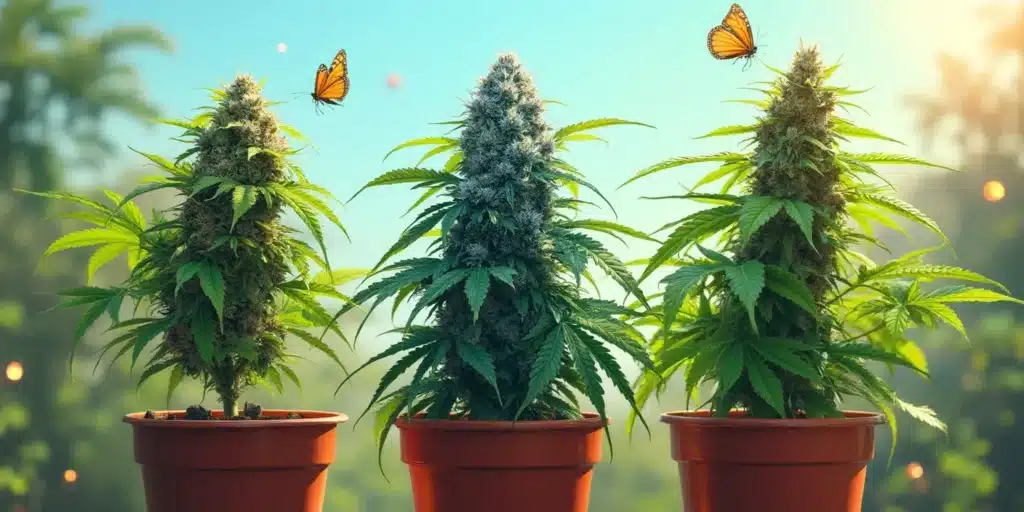
Sunlight and Location
Choosing the right location for your potted cannabis plants is crucial. Cannabis loves sunlight and thrives best with at least 6 to 8 hours of direct light daily. As you plan your garden, take time to observe your outdoor space in different seasons to determine the sunniest spots.
When selecting the ideal location, consider these points:
- Sun Exposure: Look for areas that receive maximum sunlight during the day; southern exposure is often best. The more sunshine your plants get, the more robust and productive they’ll be.
- Wind Protection: Wind can pose a threat to delicate cannabis plants, so try to find sheltered spots where they can grow unbothered by harsh gusts. You might even consider using rows of taller plants to create a windbreak!
- Accessibility: Be sure your plants are easy to access for necessary care like watering, checking for pests, and adjustments. A convenient location can save you time and encourage you to tend to your garden more frequently.
Additionally, remember that the temperature in your chosen location should be conducive to growth. Ensure your plants won’t suffer from extreme heat or cold. Keeping your garden healthy means monitoring both light and temperature conditions.
Each of these factors will contribute significantly to the health of your plants, so don’t rush this decision, take your time and choose wisely for the best results!
Watering Practices
Establishing a consistent watering routine is vital in outdoor cannabis cultivation. Finding the right balance can be tricky; overwatering can lead to root rot while underwatering can cause wilting. Monitoring your plants regularly is key!
Here are some practical tips to improve your watering techniques:
- Frequency: Touch the soil regularly to check for moisture. When the top inch feels dry, it’s time to water your plants. This proactive approach will help maintain their vitality!
- Amount: Water your plants thoroughly; seeing drainage from the pot’s bottom ensures that the entire root ball receives moisture. Aim for deep watering rather than frequent light watering.
- Timing: Watering in the early morning or late evening can minimize evaporation and give your plants a healthy drink without losing precious moisture to the sun.
Consider using mulch around the base of your pots to help retain moisture and reduce the frequency of watering. As the warmer months approach, adding a layer of natural mulch can make a noticeable difference in soil moisture levels.
Also, be aware that individual pots might require different watering patterns based on their size and plant needs, so take a moment to assess them regularly! Each plant is unique, and their watering requirements may vary.
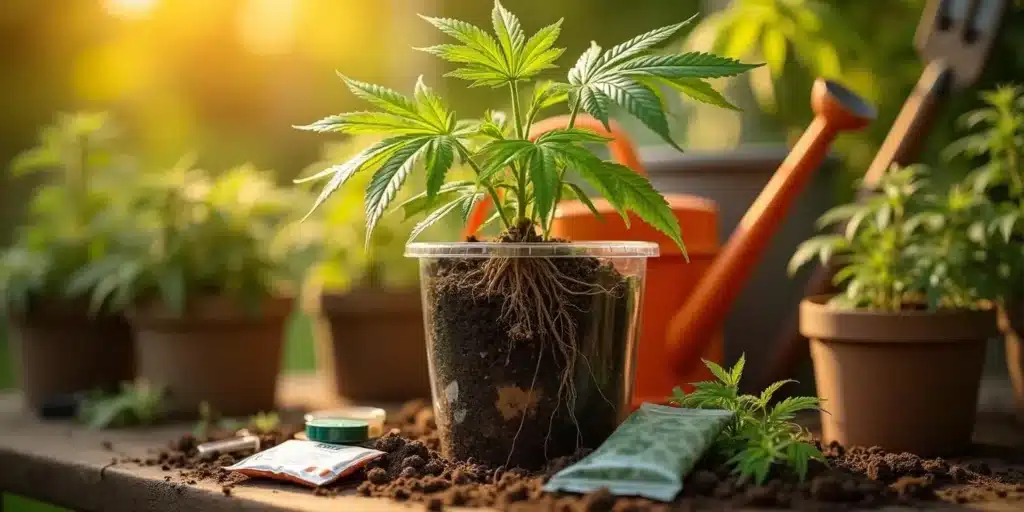
Nutrients and Feeding
Correctly feeding your cannabis plants can maximize their growth potential. During the early stages, cannabis thrives on nitrogen-rich fertilizers, but as the flowering phase approaches, you’ll need to switch to fertilizers high in phosphorus and potassium.
Here are effective feeding strategies to consider:
- Organic Fertilizers: While these take longer to release their nutrients, they can enhance soil quality and provide a sustainable feeding solution over time, benefiting both your plants and the environment.
- Liquid Nutrients: Fast-acting options can serve as a quick remedy for nutrient deficiencies. They are easy to apply and can provide immediate support during critical growth phases.
- Follow Instructions: Always adhere to the application guidelines from product labels. Over-fertilization can be harmful, leading to nutrient burn and other issues that may adversely affect your plants.
Be attentive to your plants’ responses to feeding; they will often show signs of hunger or excess. Observing leaf color changes and growth patterns can provide vital insights into their nutrient needs.
Along with regular feeding habits, using compost tea or natural worm castings can create a rich nutrient solution, promoting a healthy and thriving garden environment.
Monitoring Plant Health
Keeping a close eye on your cannabis plants is essential for early detection of problems. Regular inspections will help you spot any changes in color, growth behavior, or potential pest issues. Being proactive can save your plants from considerable harm!
Here are several important signs to watch for:
- Pest Damage: Check for holes in leaves or any signs of visible pests like aphids or spider mites. Early detection can mitigate infestations and protect your crop.
- Nutrition Deficiencies: Watch for yellowing leaves, it might indicate a nitrogen deficiency. Conversely, curled leaves can signal over-fertilization, so balance is critical!
- Water Stress: Drooping or wilted leaves often suggest that your plants need more water. Regular checks can help prevent stress before it becomes a significant issue.
Consider keeping a journal to track the health of your plants over time. Noting any changes can help you understand their growth patterns better and make more informed decisions about care.
Taking a moment each day to observe your plants can foster a deeper connection and ensure they remain healthy and vibrant throughout their life cycle.
Choosing the Right Strains
When selecting cannabis strains for outdoor growth in pots, look for genetics that can thrive in your climate. Some strains are more resilient to pests or environmental fluctuations, providing you with a more manageable growing experience.
Here are three popular strains that you might want to consider:
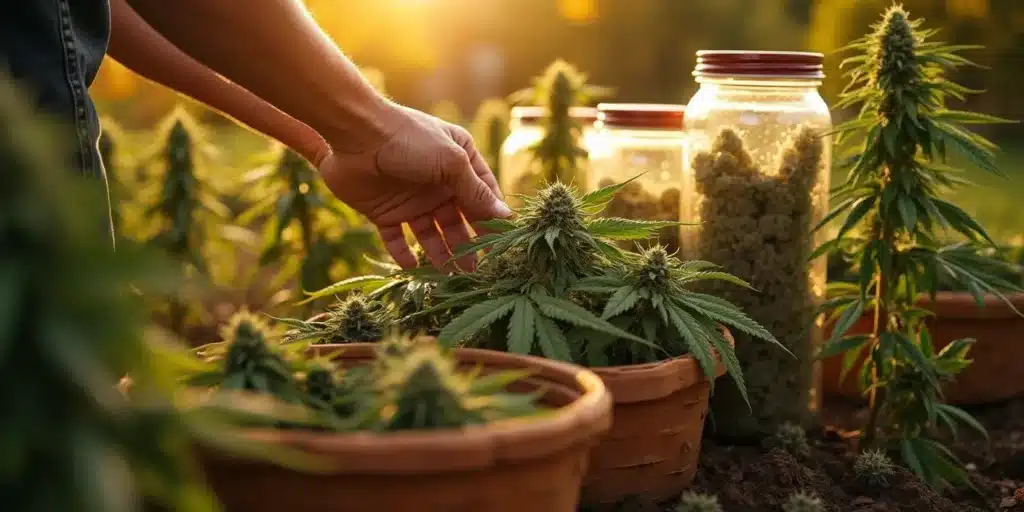
- Blue Dream: This strain is known for its balanced effects and has a sweet berry essence, making it a favorite for many growers seeking versatility and resilience.
- Girl Scout Cookies: Rich in flavor and sturdy in growth, this strain flourishes outdoors when provided with proper care and attention, appealing to both newcomers and seasoned cultivators.
- Green Crack: Known for its energizing effects, this strain adapts well to various climates, making it an ideal choice for outdoor pots.
It’s also wise to consider local recommendations or grower communities to find strains that perform well in your specific region. Engaging with local growers can provide invaluable insights that tailor your approach to suit your local environment.
Ultimately, the right strain selection will set the foundation for a successful outdoor growing experience. Invest some time into researching and understanding the strains that will best fit your gardening goals.
Harvesting Your Plants
The best time to harvest cannabis is when your plants reach maturity, often indicated by the color change in trichomes on the buds. Timing your harvest appropriately can significantly influence the potency and flavor of the final product.
Here are several key points to consider as you prepare for harvest:
- Trichome Color: The color of trichomes is an excellent indicator. Clear trichomes indicate it’s too soon to harvest, milky white trichomes suggest readiness, while amber ones may deliver a more relaxing effect.
- Drying Method: After you’ve harvested, hang the branches in a dark, well-ventilated area for about 7 to 14 days. Avoid direct sunlight, which can degrade THC levels and impact flavor.
- Curing: Once dried, store buds in glass jars, opening them daily for fresh air during the first few weeks. Curing enhances the flavor and aroma, which is the difference between quality and exceptional quality!
Harvest season can be a thrilling time, enjoy the fruits of your labor! Consider sharing your experience with friends or fellow growers; it can deepen your appreciation for the cultivation process.
Remember, patience is key during drying and curing. The time you invest can lead to a greatly enhanced final product that you can genuinely enjoy and be proud of.
FAQs
What type of pots are best for outdoor cannabis plants?
Both plastic and fabric pots have their advantages. Plastic pots are lightweight and durable, while fabric pots offer excellent drainage and aeration, promoting healthier root systems. Your choice should reflect your specific growing conditions and preferences.
If you’re new to gardening, consider starting with fabric pots. They provide more forgiving growing conditions, especially for beginners learning the ropes of outdoor cultivation.
How often should I water my outdoor cannabis plants?
Watering frequency varies based on temperature and humidity. A good rule of thumb is to check the top inch of the soil regularly; if it feels dry, it’s time to water. Watering in the early morning or late evening helps ensure moisture retention.
Using mulch can also help maintain soil moisture, reducing the need for frequent watering and ensuring consistent hydration for your plants.
What nutrients do my outdoor cannabis plants need?
During vegetative growth, fertilizers high in nitrogen are beneficial. As plants transition to flowering, switching to nutrient products rich in phosphorus and potassium is ideal. Following the manufacturer’s guidelines for application can ensure the health and success of your plants.
Keep in mind that organic fertilizers often break down more slowly, which can help promote a more stable environment for nutrient delivery, enhancing the overall health of your plants.
How do I know when to harvest my cannabis plants?
Harvesting time is indicated primarily by trichome development. Aim to harvest when most are milky white but not too many have turned amber for a balanced effect. This careful observation can dramatically influence your harvest’s potency and flavor.
Taking pictures at different stages can help you track changes and educate you about the perfect timing for your next harvest. Each cycle brings new learning experiences!
Can I grow cannabis in smaller pots?
Starting in smaller pots is acceptable, but for optimal growth, especially in an outdoor setting, larger pots are encouraged. Larger pots provide more space for roots and nutrients, leading to healthier plants in the long run.
Plus, larger pots can reduce the frequency of watering, making it easier to maintain consistency throughout the plant’s growth process.



